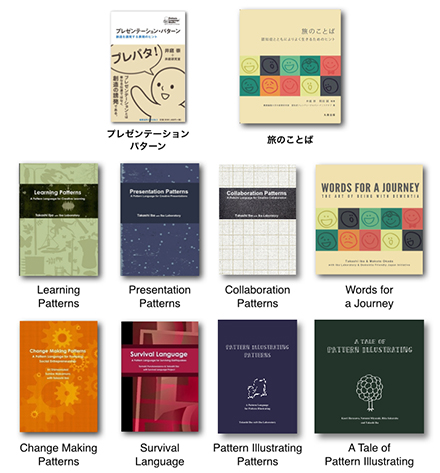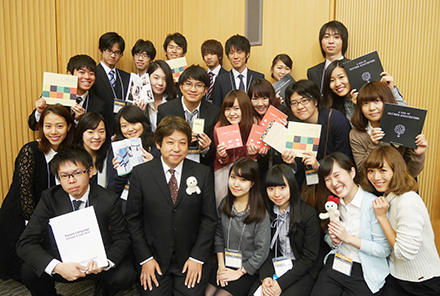2016年7月30日(土)に、井庭研 研究発表会を開催します!
2016年7月30日(土)に、井庭研 研究発表会を開催します。
現在の最新の研究成果をお披露目するので、ぜひお越しください!
今年は、英語開講の井庭研Bが始まったので、英語での発表もあります。
学内のみなさん、ぜひ見に来てね。当日、直接会場に来てくて大丈夫です。
学外の方は、事前に ilab-assist [at] sfc.keio.ac.jpまで、お名前、ご所属、井庭研や井庭との関係、参加理由等を送った上で、お越しください。
なお、ランチは時間が限られているため、事前に用意し、ご持参ください。
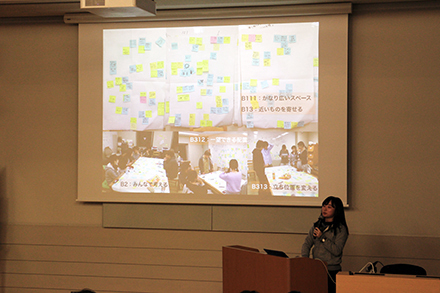
井庭研 研究発表会 (2016年度春学期)
2016年7月30日(土)09:40開場 10:00〜18:20
慶應義塾大学SFC(湘南藤沢キャンパス)大学院棟 τ11教室
10:00~10:20 《オープニングセッション》
10:20~10:50 《セッション1:学会報告(ライトニングトーク)》 ※in English
10:50~11:00 コーヒーブレイク
11:00~12:40 《セッション2:パターン・ランゲージ》
12:40~13:20 ランチブレイク(※ランチを事前に用意し、ご持参ください。)
13:20~13:40 《セッション3:ソングライティング》
13:40~14:40 《セッション4:修士課程研究報告》
14:40~15:00 コーヒーブレイク
15:00~16:20 《セッション5:パターン・ランゲージの活用》
16:20~16:40 コーヒーブレイク
16:40~18:00 《セッション6:フューチャー・ランゲージ》
18:00~18:20 《クロージングセッション》
※ランチは、時間が限られているため、事前に用意し、ご持参ください。
※プログラムの発表順番や時間は、変更される可能性があります。
問い合わせ・参加申し込み: ilab-assist [at] sfc.keio.ac.jp
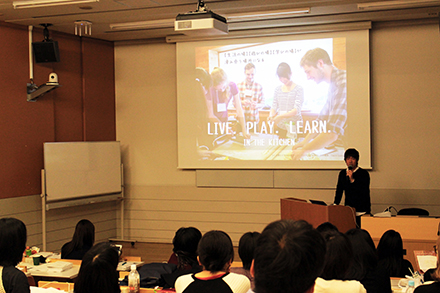
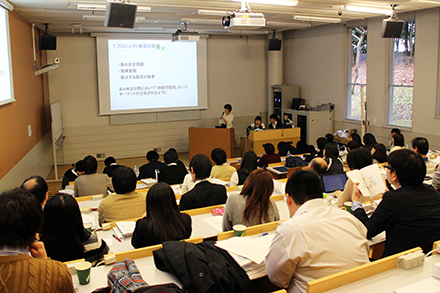
現在の最新の研究成果をお披露目するので、ぜひお越しください!
今年は、英語開講の井庭研Bが始まったので、英語での発表もあります。
学内のみなさん、ぜひ見に来てね。当日、直接会場に来てくて大丈夫です。
学外の方は、事前に ilab-assist [at] sfc.keio.ac.jpまで、お名前、ご所属、井庭研や井庭との関係、参加理由等を送った上で、お越しください。
なお、ランチは時間が限られているため、事前に用意し、ご持参ください。

井庭研 研究発表会 (2016年度春学期)
2016年7月30日(土)09:40開場 10:00〜18:20
慶應義塾大学SFC(湘南藤沢キャンパス)大学院棟 τ11教室
10:00~10:20 《オープニングセッション》
10:20~10:50 《セッション1:学会報告(ライトニングトーク)》 ※in English
- イントロダクション (Takashi Iba)
- ”Workshop Generators Patterns: A Supporting Tool for Creating New Values in a Workshop” (Yuma Akado)
- ”Design Patterns for Creative Educational Program” (Hitomi Shimizu)
- ”Pattern Objects: Making Patterns Visible in Everyday Life” (Ayaka Yoshikawa)
- “Generator Patterns: A Pattern Language for Collaborative Inquiry” (Masafumi Nagai)
- ”Pattern Symbolizing Patterns: Showing the content and value by expressions to encourage intuitive comprehension” (Shiori Shibata)
- ”Pattern Concierge: Using Push and Pull Patterns to help clients design their future”(Haruka Mori)
- ”Dementia Friendly Communities with Pattern Languages for Living Well with Dementia” (Tomoki Kaneko)
10:50~11:00 コーヒーブレイク
11:00~12:40 《セッション2:パターン・ランゲージ》
- ”Translating the Learning Patterns into Malaysian Language” (Nur Nameerah Mohd Fadzil) ※in English
- Work Life Project(いきいきと子育てをしながら働く秘訣)※花王株式会社との共同研究
- Good to Great Project(自分を突き抜けさせる生き方の探求)
12:40~13:20 ランチブレイク(※ランチを事前に用意し、ご持参ください。)
13:20~13:40 《セッション3:ソングライティング》
- ”Songwriting Project : Telling Music Power and Showing My Life As MayuGene”(Mayu Ueno) ※in English
13:40~14:40 《セッション4:修士課程研究報告》
- 「パーソナリティ形成のための対話法の確立と実践(仮)」(長井 雅史、M1)
- 「個人と社会に豊かさをもたらす消費の実践パターン分析」(鎌田 安里紗、M2)
- 「クッキング・ランゲージ:和風料理のレシピ分析ツールの製作」(伊作 太一、M2)
14:40~15:00 コーヒーブレイク
15:00~16:20 《セッション5:パターン・ランゲージの活用》
- Cooking Project(料理をする人を増やす方法)※クックパッド株式会社との共同研究を含む
- 旅のことば プロジェクト(認知症とともによりよく生きることの支援)
16:20~16:40 コーヒーブレイク
16:40~18:00 《セッション6:フューチャー・ランゲージ》
- Student Resi・e Language Project(学生の理想の住まいの言語化)※UDS株式会社との共同研究
- Future Vision Project(未来像をつくる方法論の探求)
18:00~18:20 《クロージングセッション》
※ランチは、時間が限られているため、事前に用意し、ご持参ください。
※プログラムの発表順番や時間は、変更される可能性があります。
問い合わせ・参加申し込み: ilab-assist [at] sfc.keio.ac.jp


井庭研だより | - | -
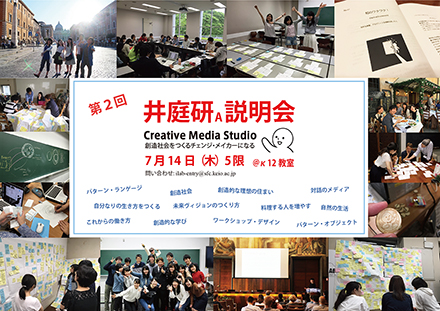
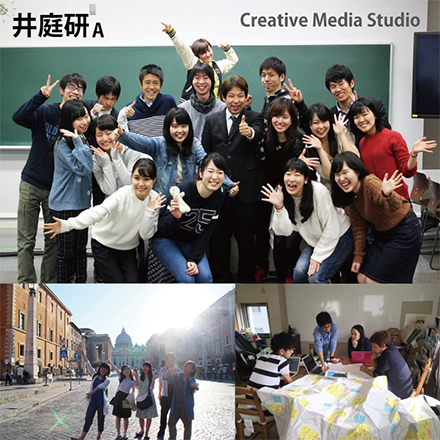
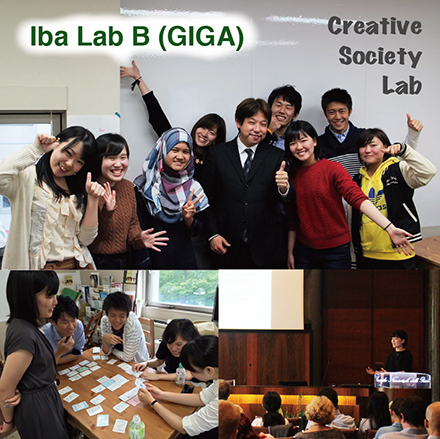
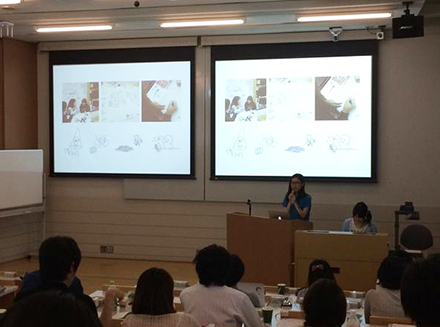
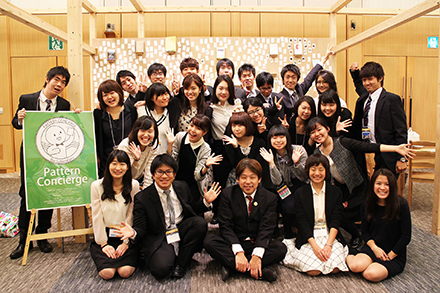
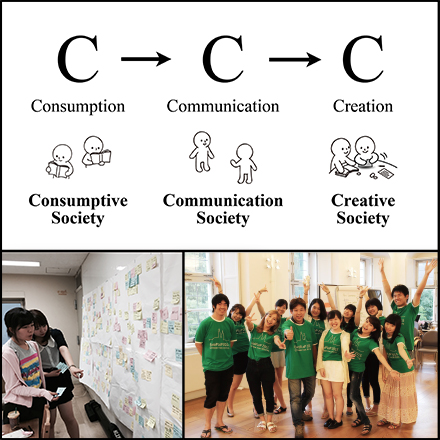
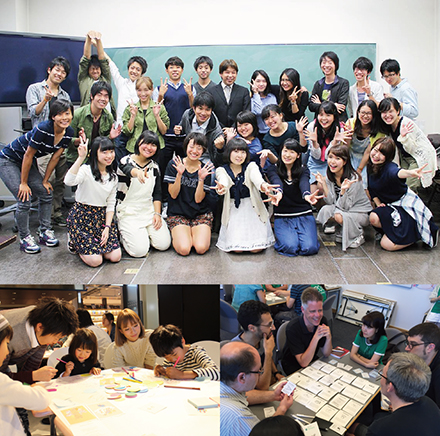
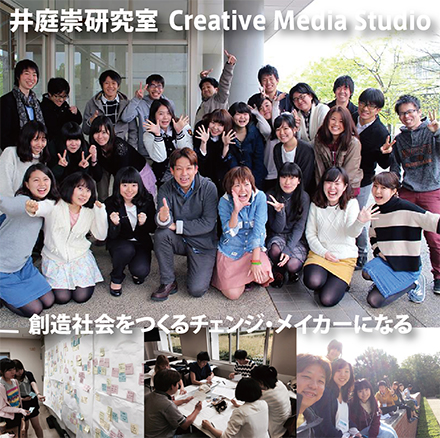
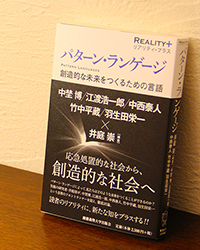 「創造社会」や「パターン・ランゲージ」については、書籍
「創造社会」や「パターン・ランゲージ」については、書籍